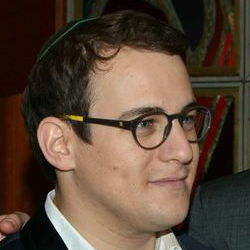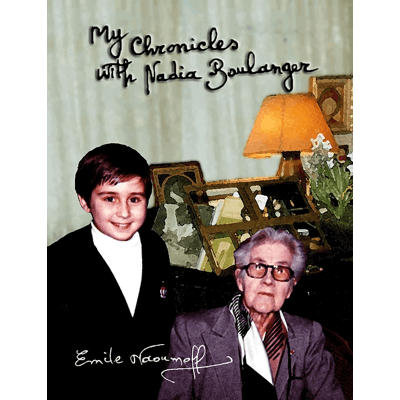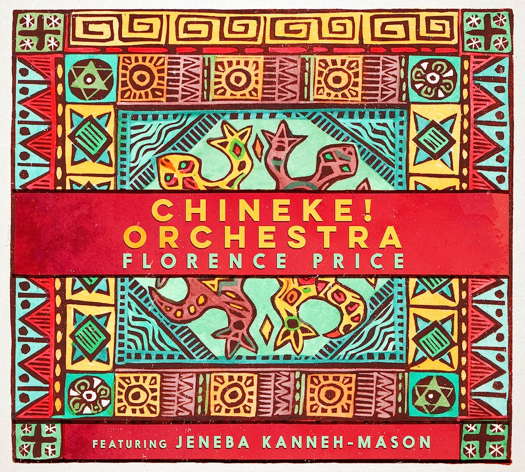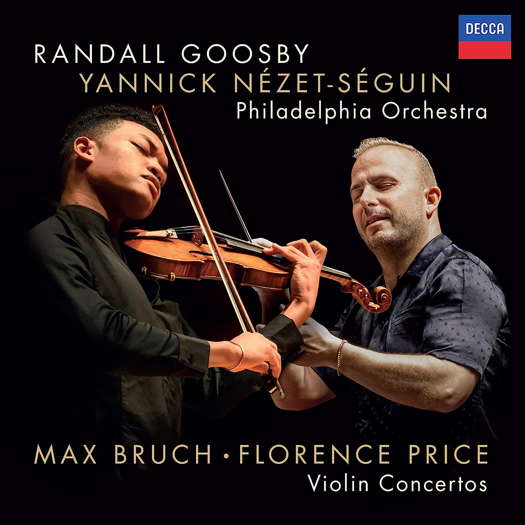 SPONSORED: Ensemble. Melting Rhapsody - Malcolm Miller enjoys Jack Liebeck and Danny Driver's 'Hebrew Melody' recital, plus a recital by David Aaron Carpenter.
SPONSORED: Ensemble. Melting Rhapsody - Malcolm Miller enjoys Jack Liebeck and Danny Driver's 'Hebrew Melody' recital, plus a recital by David Aaron Carpenter.
All sponsored features >>
 PODCAST: Join Jenna Orkin, Maria Nockin, John Daleiden, Gerald Fenech, Julian Jacobson, Patrick Maxwell, Giuseppe Pennisi and Mike Wheeler for a fascinating fifty-minute audio only programme.
PODCAST: Join Jenna Orkin, Maria Nockin, John Daleiden, Gerald Fenech, Julian Jacobson, Patrick Maxwell, Giuseppe Pennisi and Mike Wheeler for a fascinating fifty-minute audio only programme.
- Solo Musica
- Indiana University
- Charles Villiers Stanford
- Judith Lang Zaimont
- New York
- Bologna
- Heliogabalus
- Anna Magdalena Bach

Stunning Performances
GERALD FENECH reviews two discs of music by American composer Florence Price
'This is music overflowing with an abundance of melody, tinged with sadness and regret, which is crying out to be heard.'
Florence Price (1887-1953) was an American classical composer who was active in Chicago from 1927 until her death in 1953. Price is noted as the first African-American woman to be recognised as a symphonic composer, and the first to have a composition - her Symphony No 1 - played by a major orchestra. Price composed over three hundred works, in several genres, but after her death she was completely forgotten. It is only in the last fifteen years or so that her music has started to emerge.
Neglected for decades, Florence Price's music is at last being resurrected with a real vengeance, and bit by bit we are discovering what a fine composer she was. Indeed, this is the second Price CD I am reviewing in the space of three weeks - my other review is below - and the works are among the composer's most lauded pieces.
The First Symphony was composed between January 1931 and early 1932 while Price recovered from a broken foot. The composer entered the symphony in the Rodman Wanamaker composition, in addition to three other concert works, and while all four received recognition, it was the symphony that won first prize. The award brought Price national recognition and caught the attention of conductor Frederick Stock of the Chicago Symphony, who premiered the work in June 1933. Lasting some forty minutes, the work is in four movements with two long first movements and the last two very short but rousing miniatures. Price drew inspiration from melodies and rhythms found in Afro-American folk music for the first movement.
Listen — Florence Price: Allegro ma non troppo (Symphony No 1 in E minor)
(485 3996 track 4, 10:19-11:08) ℗ 2023 Chineke! Records :
The Adagio features a moving hymn tune of Price's design. Both concluding movements are fast and return to the African Juba dance concept. Dvořák's 'New World' is also given a nod.
Listen — Florence Price: Finale - Presto (Symphony No 1 in E minor)
(485 3996 track 7, 3:46-4:38) ℗ 2023 Chineke! Records :
The beautifully written Piano Concerto in One Movement was premiered in Chicago in 1934 with Price herself as the soloist. Unfortunately there are no copies of the composer's manuscript of the orchestral score, so composer Trevor Weston was commissioned to reconstruct the concerto's orchestration in order to revive it. Although it is technically in one movement, there are three distinct sections played without a break. The first begins with an introduction in slow tempo, and continues with an urgent and lyrical principal section.
Listen — Florence Price: Andantino (Piano Concerto in One Movement)
(485 3996 track 1, 0:00-0:53) ℗ 2023 Universal Music Operations Limited :
The slow-tempo central panel is tender, nostalgic and more lightly scored than the opening section.
Listen — Florence Price: Adagio (Piano Concerto in One Movement)
(485 3996 track 2, 5:23-6:11) ℗ 2023 Universal Music Operations Limited :
The concerto concludes with an example of a juba, a folk dance that was popular before the Civil War, a sort of proto-rag.
The programme also includes the second movement, 'His resignation and faith' from Ethiopia's Shadow in America, a work in three linked movements describing how African slaves brought to America were able to adapt to a new life. A middle section this, full of tender pathos.
This is music overflowing with an abundance of melody, tinged with sadness and regret, which is crying out to be heard. Conductors, soloist and orchestra get to the bottom of these scores with panache and conviction, and their commitment to Price's cause is as warm-hearted as it is revelatory. Superb advocacy for a composer who is starting to re-emerge from the cold. Sound and booklet notes are top notch. Strongly recommended.

With this inspiring recording of her two violin concertos, Florence Price's star will certainly continue to rise. When renovators entered her old Illinois summer house more than fifty years after her death in 2009 and discovered a stack of old manuscripts which were completely discarded, they came across these two concertos, and this important find was the catalyst to arouse afresh interest in her music.
Price's first violin concerto dates from 1939, but there is no record of any performance while she was still active. The piece only lasts for about twenty-five minutes, but there are many beautiful tunes, especially in the first movement where its beginning reminds one of Tchaikovsky's masterwork.
Listen — Florence Price: Tempo moderato (Violin Concerto No 1 in D)
(485 4234 track 5, 0:56-1:50) ℗ 2023 The Philadelphia Orchestra Association :
A likeable bluesy fragrance permeates the second while the third is short in duration but packed with a rousy 'moto perpetuo'.
Listen — Florence Price: Allegro (Violin Concerto No 1 in D)
(485 4234 track 7, 4:05-5:05) ℗ 2023 The Philadelphia Orchestra Association :
The second concerto is a more straightforward proposition, a single movement lasting some fifteen minutes. Written in 1952, a year before Price's demise, it is the work of a more mature composer, and this is all too evident in the intricate interplay between violin and orchestra.
Listen — Florence Price: Violin Concerto No 2
(485 4234 track 8, 4:17-5:08) ℗ 2023 The Philadelphia Orchestra Association :
Max Bruch (1838-1920) was a German composer, violinist, teacher and conductor who wrote more than two hundred works, including three violin concertos, the first of which has become staple diet of the violin repertoire. Indeed, it has been recorded many times by some of the greatest violinists of the last century. The piece was first completed in 1866 and the premiere was given on 24 April 1866 by Otto von Konigslow, with Bruch conducting. Later the composer considerably revised the concerto with the help of Joseph Joachim, and the work was completed in its present form in 1867. The premiere of this revised version was given by Joachim himself in Bremen on 7 January 1868 and since then it has never look back. The piece is saturated with exquisite melodies, dramatic virtuosity and, above all, a gentle mellowness that keeps the listener wanting more after everything is done.
Listen — Max Bruch: Finale (Violin Concerto No 1)
(485 4234 track 3, 2:37-3:29) ℗ 2023 Universal Music Operations Limited :
Now, what about the performances? In one word: stunning. Randall Goosby's first disc for Decca in 2021 was greeted with raving reviews. Two years on he is one of the most sought violinists around, and his charisma and exciting playing style are setting audiences alight wherever he performs.
These performances reveal both soloist and orchestra are alive to every detail in these scores, and they make a highly convincing statement for a very contrasting programme, which also includes Adoration, a lovely miniature by Price arranged for strings by Jim Gray.
Listen — Florence Price, arranged by Jim Gray: Adoration
(485 4234 track 4, 2:33-3:31) ℗ 2023 The Philadelphia Orchestra Association :
Exhilarating from start to finish. Superb sound and presentation are the cherries on the cake.
Copyright © 11 June 2023
Gerald Fenech,
Gzira, Malta



